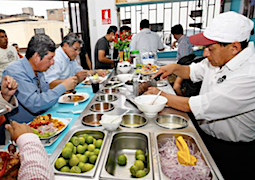Peruvian streetfood
In Lima, there is a true street food culture where food stands come out in the evenings to sell the most delicious street food. Nowadays, you find them all over Lima during the nights, but back in the days, the street stands were only found in unsafe areas with a lot of crime. The majority of Peruvian street food is Afro-Peruvian fusion. Being slaves, people were poor, and they did not have many ingredients, so they had to be very creative. For example, they marinated ‘garbage’ meat with herbs available. Street food is popular all over the country, but the street stand culture is most popular in Lima. Signature street food: anticuchos, arroz con leche, cassava croquets, picarones, sanguches, tamales and tequeños.












